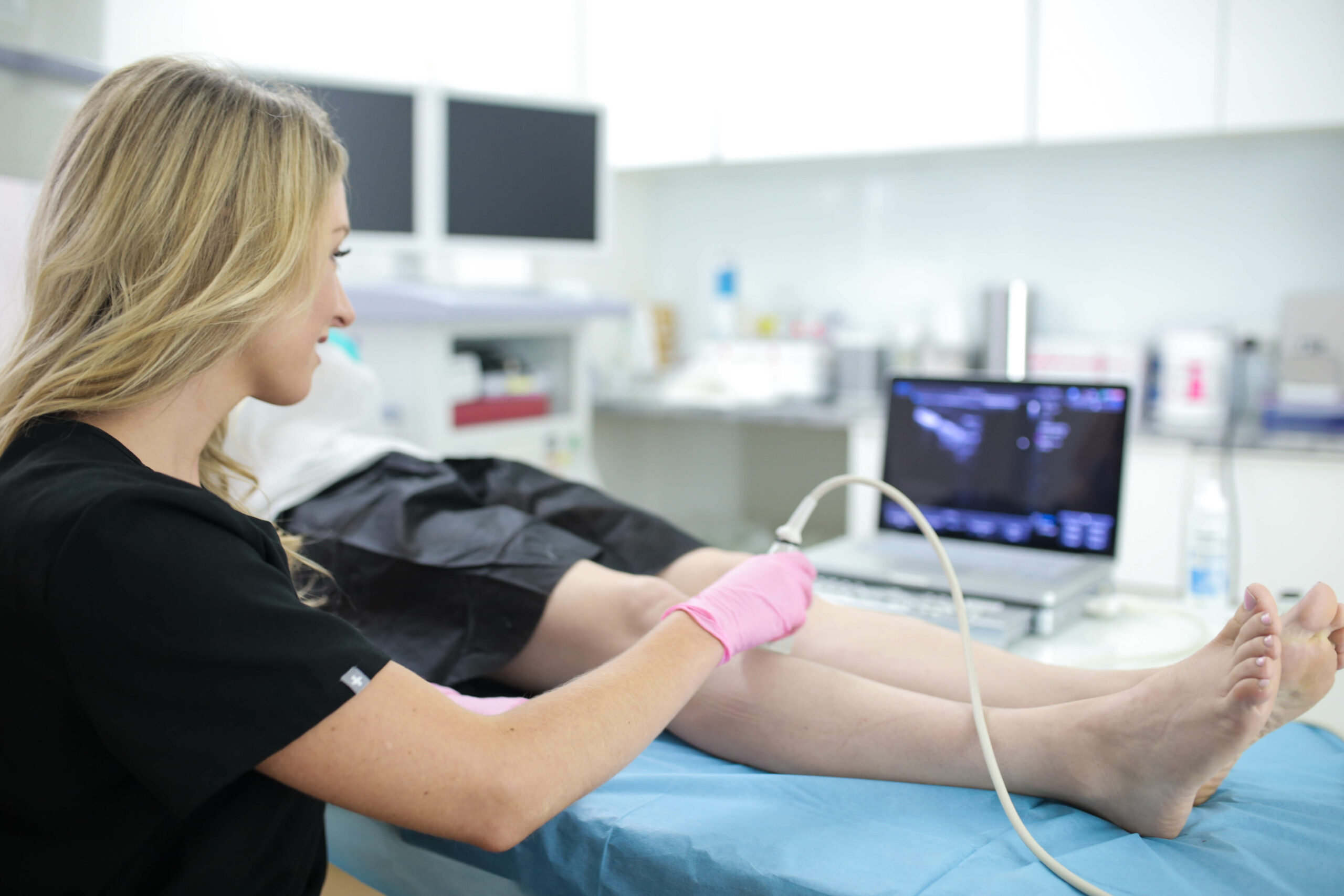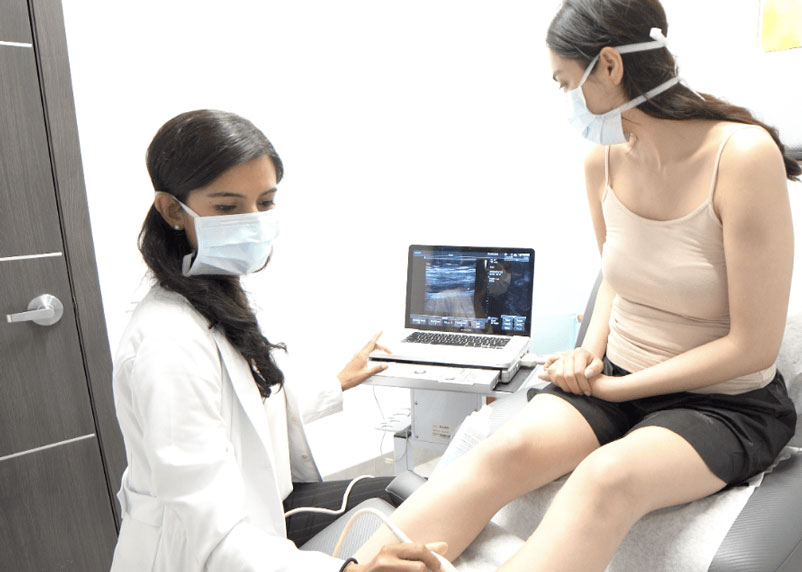If you’re considering spider vein treatments, you may have heard of laser therapy. The primary attraction of laser therapy for spider veins is that it’s completely non-invasive. The procedure involves channeling laser energy into the targeted spider veins to make the blood vessels collapse and get reabsorbed by the body. The spider veins eventually fade away from the skin’s surface, making your skin look smooth and flawless. But what can you expect after laser spider vein treatment?

Laser therapy for spider veins doesn’t produce immediate results. After laser therapy, the spider veins will be damaged and gradually turn into hardened scar tissues, which will make them look darker against your skin. You might even think your spider veins are worsening. After several weeks, your body will reabsorb the hardened scar tissues, and the spider veins will fade away from your skin’s surface. But laser therapy is one of the least effective spider vein treatments available, so the results are slow and minimal.
Laser therapy can only work on the thinnest and smallest spider veins, so it can’t treat all of your vein problems. Furthermore, it takes a long time for light energy to break down the blood vessels, so you may need multiple sessions spaced several weeks apart to see the desired results. It’s not uncommon for patients to go through several rounds of laser therapy over several months for mild improvements.

Vein Treatment Clinics is a group of state-of-the-art spider vein centers specializing in minimally invasive treatments for spider veins. We only treat spider veins using sclerotherapy and other advanced techniques that guarantee dramatic improvements within short periods. Our vein doctors only provide laser therapy for spider veins on the face, feet, and specific regions with dense artery-vein connections. If you have unwanted spider veins that you want to remove effectively, please schedule an appointment today.
We have numerous state-of-the-art spider vein clinics across the United States, including Midtown Manhattan, Long Island, San Jose and San Diego, Maryland, and New Jersey. If you’re in or around the Beltway, you can find our spider vein treatment clinic in Bethesda, Maryland.
How long does it take to see results after spider vein treatment?
Sclerotherapy is widely considered the best minimally invasive procedure for spider veins. Due to the prevalence of medical spas, a wide range of patients pursue laser therapy for spider veins, especially since it’s completely non-invasive. But while laser therapy offers mild improvements after multiple sessions spaced weeks apart, sclerotherapy offers dramatic improvements after three weeks. You should only pursue sclerotherapy spider vein treatment for optimal, long-lasting improvements in your spider veins.
Is sclerotherapy better for spider veins than laser or light therapy?
Sclerotherapy is considerably better for spider veins than laser or light therapy. Sclerotherapy involves injecting a sclerosant medicine into the spider veins — one injection per spider vein. The sclerosant medicine fuses the spider veins’ walls together, turning them into hardened scar tissues eventually metabolized by the body. The spider veins seem to darken after the treatment, but they fade away within three weeks, making your legs look smooth and flawless. In some cases, you may need an additional session for the remaining spider veins.
Laser therapy, in comparison, is highly ineffective. Laser therapy involves channeling highly calibrated wavelengths of light energy into the spider veins to collapse their vein walls. Instead of targeting specific spider veins, light energy affects all the spider veins in the region. It may take several sessions spaced a few weeks apart for the spider veins to fade away. Furthermore, laser therapy only works on the thinnest spider veins, so all the unwanted veins might not go away. That’s why laser therapy is generally inferior to sclerotherapy.
Patients usually pursue laser therapy instead of sclerotherapy because it’s non-invasive. But most patients who undergo laser therapy eventually end up seeking sclerotherapy treatments for more effective and long-lasting results.
How many sclerotherapy sessions will I need?
The number of sclerotherapy sessions you need depends on the number of spider veins in your body. Each sclerosant injection targets one spider vein, so the number of injections depends on the number of spider veins on your body. If you have a high volume of spider veins, you may need additional sclerotherapy sessions to target all of them. Most patients need 2 to 3 sclerotherapy sessions spaced a few weeks apart for optimal results. But if you contact the vein doctor at the early stages of spider veins, you may only need one session.
Does sclerotherapy treat the root cause of spider veins?
Sclerotherapy is a cosmetic treatment because it only addresses the visible spider veins — not the root cause of spider veins. Chronic venous insufficiency is the primary root cause of spider veins — this is a medical condition wherein the collapse of vein valves leads to backward blood circulation and the accumulation of blood in leg veins. Sclerotherapy addresses the visible spider veins, but it can’t treat underlying vein disease.
You must consult vein doctors who offer minimally invasive procedures for underlying vein disease. Your vein doctor must perform thorough ultrasound diagnostic tests to visualize the root cause of spider veins, curate a personalized treatment plan, and treat underlying vein disease. After treating vein disease, the vein doctor can proceed with sclerotherapy spider vein treatment to remove the unwanted spider veins.
Our considered approach to spider vein treatment ensures safe, consistent results that improve your appearance and minimize the risk of spider veins returning.









